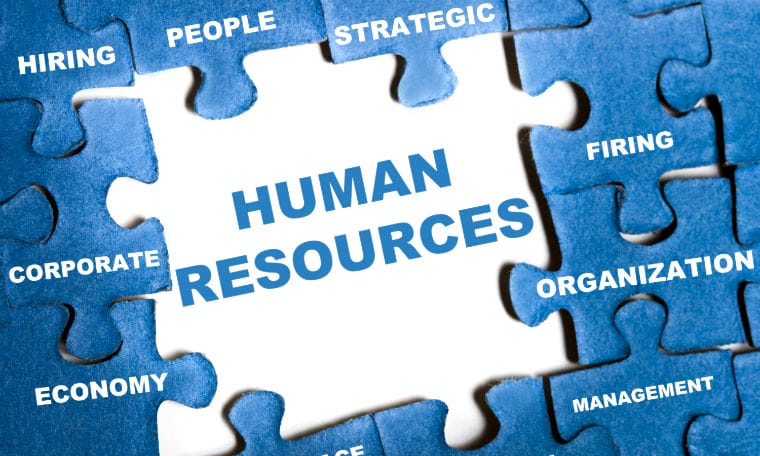Employee engagement is to HR what customer loyalty is to marketing and sales. It is that often elusive frame of mind that goes beyond satisfaction and ensures the long-term and productive tenure of the faithful employee with the employer.
This article describes how leading organizations define employee engagement, how they collect and measure and put into play relevant information and how they ensure senior leadership is held accountable for making employee engagement a part of the organizational culture.
Defining employee engagement
In order to make the most of such key talent processes as recruiting, training and development and retention, organizations should be tuned in to the “voice of the employee” and ensure that valued employees are engaged with the organization.
A manager of organizational effectiveness and employee engagement at a Fortune 100 company put it this way: “The typical organization today views talent management as three building blocks: attract, develop and retain. These are solid building blocks. The challenge is that these blocks won’t stick together unless there is mortar. And that mortar is employee engagement. A robust, world-class talent management process has to put the mortar between those three key building blocks.”
To avoid platitudes, every organization should define employee engagement to ensure that the information it is gathering from the workforce on can be put into practice. For example, one organization researched by APQC for its newest collaborative research project, “Rewarding, Engaging, and Retaining Key Talent,” defines employee engagement as commitment, work ethic and loyalty.
Another organization defines employee engagement as a combination of perceptions—including satisfaction, commitment, pride, loyalty, sense of personal responsibility and willingness to be an advocate for the organization—that have an impact on behavior.
And a third defines engagement centrally as “an individual sense of purpose and focused energy, evident to others in their display of personal initiative, effort and persistence, that is directed toward organizational goals.”
Each organization in the study is clear about what it means to be an engaged employee. That definition is reinforced through standard processes and practices for collecting employee engagement information.
Why employee engagement is important
Both qualitative anecdotes and quantitative research indicate that organizations realize positive outcomes from employee engagement.
For example, a best-practice organization candidate for APQC’s “Rewarding, Engaging, and Retaining Key Talent” study found that high levels of employee engagement have been correlated with high levels of quality, productivity and attendance. Another has correlated higher levels of employee engagement with higher levels of new product innovation. And a third has observed some very positive business outcomes, in large part because of its focus on employee engagement over the past four years, including a reduction in team member turnover of 19 percent, a reduction in workers’ compensation claims of 27 percent, an increase in net revenue of 22 percent, and an increase in earnings before interest, taxes, depreciation and amortization of 43 percent.
Quantitative research reinforces the relationship among customers, employees and the bottom line. For example, the classic 1994 Harvard Business Review article “Putting the Service Profit Chain to Work” establishes relationships among profitability, customer loyalty, employee satisfaction and productivity. A 2003 article from Journal of Applied Psychology—“Which Comes First: Employee Attitudes or Organizational Financial and Market Performance?”—found consistent and significant positive relationships over time between overall job satisfaction and financial and market performance (as well as reciprocal relationships).
Measuring employee engagement
Employee attitude or climate surveys are two tools for gathering feedback and enhancing workplace communication. APQC’s Open Standards Research shows that workforce climate surveys primarily take the form of an annual census, which means that all employees are surveyed once a year. (About half of survey participants conduct employee satisfaction/engagement surveys at least once per year.) The results are then communicated to senior leaders and the top managers responsible for such key employee areas as talent management, compensation and benefits for action and process improvement.
APQC’s qualitative research also sheds light on how best-practice organizations monitor the voice of the employee and take action. For example, one organization calculates an employee engagement index, based on a subset of employee survey items measuring the engagement of respondents:
• Satisfaction: Employees are asked, “Considering everything, how would you rate your overall satisfaction with the company at the present time?”
• Advocacy: Employees are asked whether they “would recommend the company as a great place to work.”
• Retention: Employees are asked to respond yes or no to the statement “I rarely think about looking for a job with a new company.”
• Pride: Employees are asked to respond yes or no to the statement “I am proud to work for the company.”
At another organization in APQC’s collaborative research, employee engagement is measured two times per year through a formal survey. First, the organization administers a formal employee engagement survey to all employees worldwide. This information is analyzed, and action plans are developed and implemented based on results. Participation is voluntary; in 2008, roughly 92 percent participated in the survey. Then about halfway through the year the organization conducts a random poll to assess how well it is doing with the action plans generated from the annual survey results.
Sustaining a commitment to employee engagement
The final steps in the engagement process are ensuring that the information can be acted upon, that senior leadership is held accountable for the results, and that a focus on employee engagement is instilled in organizational culture.
Employee satisfaction and engagement research should be important elements in HR and organizational strategic planning processes. Of the organizations participating in APQC’s Open Standards Research, 77 percent indicate that employee feedback and surveys are key aspects of the organizational HR planning process (Figure 1, N=75). Because employees are important customers—indeed, the ultimate customers—of HR plans, policies and strategies, their opinions can help organizations gauge the success of particular initiatives, determine strategic priorities and pinpoint needed improvements.
|
Which of the following are inputs into your HR planning process? |
||
|
Organizational long-term objectives |
83% | |
|
Organization mission statement |
80 | |
|
Senior management directive |
79 | |
|
Employee feedback/surveys |
77 | |
|
Internal and external analysis |
75 | |
|
Corporate and unit strategies |
72 | |
|
HR customer satisfaction surveys |
52 | |
|
Other |
5 | |
Organizations must also reinforce how seriously they take employee engagement. According to APQC’s Open Standards Research, employee satisfaction and the growth of key staff members are the most common employee- or HR-related metrics factored into leadership compensation (Figure 2, N=156). Employee satisfaction is typically gauged via employee satisfaction, engagement, climate or culture surveys. Staff development is typically measured by the number of promotions and developmental opportunities completed.
|
Which of the following people/HR metrics are built into the compensation plan for the leadership team at your business entity? |
||
|
Employee satisfaction (climate/culture survey) |
40% | |
|
Growth of key staff (promotions, developmental opportunities provided) |
40 | |
|
No people metrics built into compensation plans for leadership |
32 | |
|
Attrition/retention of key staff |
28 | |
|
Staff training completed in comparison to learning goals |
21 | |
|
Number of available positions filled internally |
19 | |
|
Diversity |
15 | |
|
Other |
9 | |
Here are some examples from APQC’s collaborative research of how leading organizations act on this information:
• The organization feeds results of the employee engagement survey into action plans and process-improvement initiatives. Through data analysis, it compares each group’s employee engagement index against the organization overall and against the benchmarks.
• In another example, each business unit develops action plans based on results of the previous year’s engagement survey and the follow-up pulse survey. The organization also requires that all managers with direct reports have performance objectives related to engagement.
• A third organization directs information from the customer and employee surveys to the appropriate process owners for action and improvement. This information is used as one factor in computing bonuses for senior leadership and is communicated to managers for process-improvement purposes. Results are also used for group training purposes when necessary. The organization also convenes a cultural council for every operating location to review information from the employee and customer surveys and discuss other employee issues and concerns, such as turnover and career paths. The cultural council comprises employees who meet on a monthly basis as part of the council and discuss improvement opportunities. Actions and feedback suggested by the councils then are communicated at the district and the division level.
The final consideration is making employee engagement part of an organization’s culture. One way to do this is by integrating employee engagement into other key talent initiatives and activities. For example, one organization integrates employee engagement into such activities as learning and development, Six Sigma, succession management and nonfinancial recognition:
• In learning and development: One e-learning module focuses specifically on the “fundamentals of employee engagement.”
• In Six Sigma: The company has been able to calculate estimated improvements in business outcomes based on improvements in the employee engagement scores using Six Sigma processes.
• In succession management: Successors are ultimately selected based not only on their performance and potential, but also on their engagement, leadership and values, as measured by the employee opinion survey.
• In nonfinancial recognition: The company grants an annual “Chairman’s Recognition for Engagement” award to deserving employees each year.
In this manner, employee engagement is integrated throughout different aspects of talent management and is instilled as a key part of organizational culture.




 Disruptive events, such as recessions, cause organizations to re-examine taken-for-granted ways of working. In these periods, there is a unique opening to restructure working relationships in more productive ways—before managers and employees once again settle into more stable patterns. And therein lies the opportunity to leverage a downturn to create positive changes that can serve your organization well—now and in the future.
Disruptive events, such as recessions, cause organizations to re-examine taken-for-granted ways of working. In these periods, there is a unique opening to restructure working relationships in more productive ways—before managers and employees once again settle into more stable patterns. And therein lies the opportunity to leverage a downturn to create positive changes that can serve your organization well—now and in the future.






